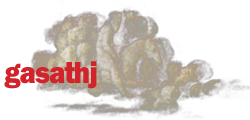With invention of the concept of Artificial Life by Christopher Langton in 1987, many artists have created all sorts of artistic works around algorithms and methods inspired by creations in biology.
Mitchell Whitelaw makes an excellent overview in his book : MetaCreation Whitelaw, 2004. Among major artists who worked in this field, one must mention William Latham and his project Mutator, Karl Sims with his virtual creatures, Christa Sommerer and Laurent Mignonneau for a most of their art works. Most of all have based their creations on the major work done by D'arcy Thompson D'Arcy Thompson, 1992 : creation of new morphogenesis. Let’s mention also Ernst Haeckel Haeckel, 1998 with his amazingly creative and pseudo realistic radiolarians, and Richard Dawkins Dawkins, 2003 for the use of evolutionary theory in the development of such creatures.
Many other designers have ventured into the exciting world of Artificial Life. Note in particular that architects are among those who explored best this path. At MIT, Peter Testa and his group “Emergent Design” developed an excellent demonstration Testa, 2000. Also include Michael Weinstock, leading expert in emerging architecture Weinstock, 2010, Celestino Soddu with Argenia Soddu, 1998 and Martin Hemberg, also member of the MIT research group, author of the GenR8 software Hemberg , 2006.
The principles of such creations rely heavily on the idea of computational nature Flake, 1998. Those concepts were beautifully highlighted by Melanie Baljko and Nell Tenhaaf in sculpture field Baljko, 2006.
Artificial Beings
In 2002, I started a work based on the concept of artificial beings as creators. During 10 years of research and design, I have been interested successively in Plant Beings (2002), Light Beings (2003), Painting Beings (2004), Time Beings (2007), Cinema Beings (2010) and Sculpture Beings (2012).
While most authors mentioned above used Artificial Life as a tool to create art (architecture, sculptures, art installations, etc..), Artificial Beings are themselves creators: they are both artwork and directors of the work.
They are based on the principle of ecosystem inhabited by agents whose duty is to create. Thus, Plant Beings and Light Beings, were the first Beings to be put into action and have been shown in various exhibitions Lioret, 2004.
Light Beings in action. © Lioret, 2003
Painting Beings
Painting Beings have been implemented so far in a much more complex way. Presented at SIGGRAPH 2005 Lioret, 2005, they are the first to organize themselves to paint vibrant, capable of biomimicry. You can see several videos that show their creative abilities and how they work.
Painting Beings as living painting. © Lioret, 2005.
See these videos :
http://www.youtube.com/watch?v=yrsB5wAxdaE&feature=plcp (film)
http://www.youtube.com/watch?v=sDa9R1dB56Q&feature=plcp (making of)
http://www.youtube.com/watch?v=p8-W5LOxuuo&feature=plcp (demo)
You can even see a real-time demonstration on the Web here:
http://alainlioret.fr/research/painting-beings
During the same period of time, I worked on an unfinished and far more complex concept with Time Beings (Uchrons). In fact, Time Beings use the same creative method as Painting Beings, but using the possibilities of quantum simulation to play in the creation at different time frames : past, present and future.
Cinema Beings
The most advanced system currently around Beings, is implemented in the Cinema Beings, where a large number of different Beings are in action to create an experimental film. Lioret, 2012. In addition to Light Beings and Painting Beings that are used here, one can see Sound Beings (for sound and music), Eye Beings (for cameras), Cut Beings (for editing, clearly inspired by the Eisenstein's theories).
See first film by Cinema Beings here :
http://www.youtube.com/watch?v=23hfJrWn2WA&feature=plcp
Cinema Beings. © Lioret, 2010.
Sculpture Beings
Currently, the concept is extended to the art of sculpture. The principle of Sculpture Beings is similar to Painting Beings, but in three dimensions. Beings aren't still pixels (pigments), but vertices (atoms of matter). Their goal is simple: to create a living sculpture, and go further in the field of emergent design.
“Swan”. Sculpture Beings. © Lioret, 2012.
More informations on www.alainlioret.fr
References :
Baljko, 2006 Baljko M., Tenhaaf N., Different Experiences, Different Types of Emergence: A-life Sculpture Designer, Interactant, Observer. 2006, American Association for Artificial Intelligence.
D'Arcy Thompson, 1992 D'arcy Thompson, On Growth and Form. Cambridge University Press . 1992
Dawkins, 2003 Dawkins R., The evolution of evolvability. On Growth, Form and Computers, 2003
Flake, 1998 Flake, G.W. (1998): The computational beauty of nature, computer explorations of fractals, chaos, complex systems, and adaptation, Cambridge: The MIT Press.
Haeckel, 1998 Haeckel E., Art Forms in Nature: The Prints of Ernst Haeckel. Prestel . 1998
Hemberg, 2006 Hemberg M., O'Reilly UM., Menges A., Jonas K, Costa Goncalves M., Fuchs S. Exploring generative growth and evolutionary computation in architectural design. Art of Artificial Evolution. 2006
Lioret, 2004 Lioret A., Emergence Of L-Cellular Morphogenesis. In Generative Art Conference. Milano. December 2004
Lioret, 2005 Lioret A., Beings Paintings. In Proceedings of SIGGRAPH. Los Angeles. USA. August 2005
Lioret, 2012 Lioret A.,Artificial Life Creation for Cinema. Science e-book. November 2012.
Soddu, 1998 Soddu C., Argenia, a Natural Generative Design . Generative Art Conference 1998.
Testa, 2000 Testa P, O’Reilly UM., Ian Ross I. Emergent Design: Artificial Life for Architecture Design.
Weinstock, 2010 Weinstock M., The Architecture of Emergence: The Evolution of Form in Nature and Civilisation. John Wiley & Sons Ltd (12 février 2010)
Whitelaw, 2004 Whitelaw M., Metacreation. Art and Artificial Life. MIT Press. 2004
